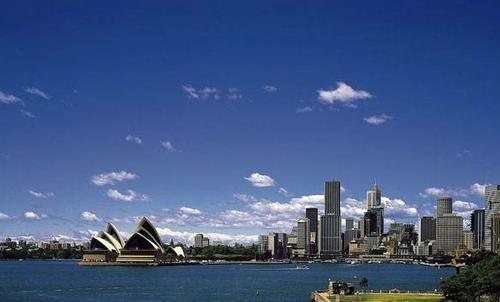Australia's economy, already under severe downward pressure, has been hit by a new pandemic. Analysts say the Australian economy is at risk of its first recession in nearly 30 years, and it remains to be seen how effective a succession of government stimulus measures will be.
In its latest world economic outlook, the international monetary fund expects Australia's economy to contract 6.7 per cent in 2020. Earlier this month, international rating agency standard & poor's cut its outlook on Australia's sovereign credit rating to negative from stable.
"These figures from the IMF are not a surprise, and they reflect where we are now, with the global economy facing the brunt of the epidemic." Australian treasurer freidenberg 15 to the media.
The Australian economy has been under downward pressure in recent years. The outbreak could be the "last straw" that ends Australia's sustained economic growth. Since the outbreak, Australia has continuously upgraded its prevention and control measures, strictly controlling the entry and exit of people, and various states have introduced policies to restrict the movement and gathering of people. Non-essential industries have been closed to business, and a large number of activities and sports events have been cancelled.
"The prevention and control measures have greatly restricted People's Daily activities and international travel, which has resulted in a decrease in demand, which has greatly affected tourism, education and trade." Sarah hunt, Australia's chief economist at the British think tank Oxford economics, told reporters.
Business confidence has also been battered by the outbreak. The latest monthly business survey from national Australia bank shows that both business confidence and business conditions fell sharply in March, with business sentiment in particular hitting a record low. The report argues that a lack of confidence will lead to a sustained decline in employment and business capital spending.
The federal government estimates the unemployment rate could rise to 10% in the second quarter from 5.1% now.
Australia's parliament on Thursday approved a $130 billion ($1, 0.62) wage subsidy scheme to help businesses and employees weather the storm, which is expected to cover 6 million employees. Together with the plan, the government's recent stimulus measures total about a $320bn, or 16.4 per cent of gross domestic product.
A series of stimulus and social assistance measures from the federal and state governments are necessary, analysts say, but it remains to be seen how effective they will be.
Mr Hunt said Australia's recovery was likely to be shaped like a "U" rather than a "V". "Recovery will take time. In the future, the lifting of epidemic control measures will gradually bring economic activity back on track. But some losses are irreversible.
Alan oster, chief economist at national Australia bank, says many businesses have seen their cash flow drop because of the outbreak and will not be able to resume operations immediately if the outbreak ends.


